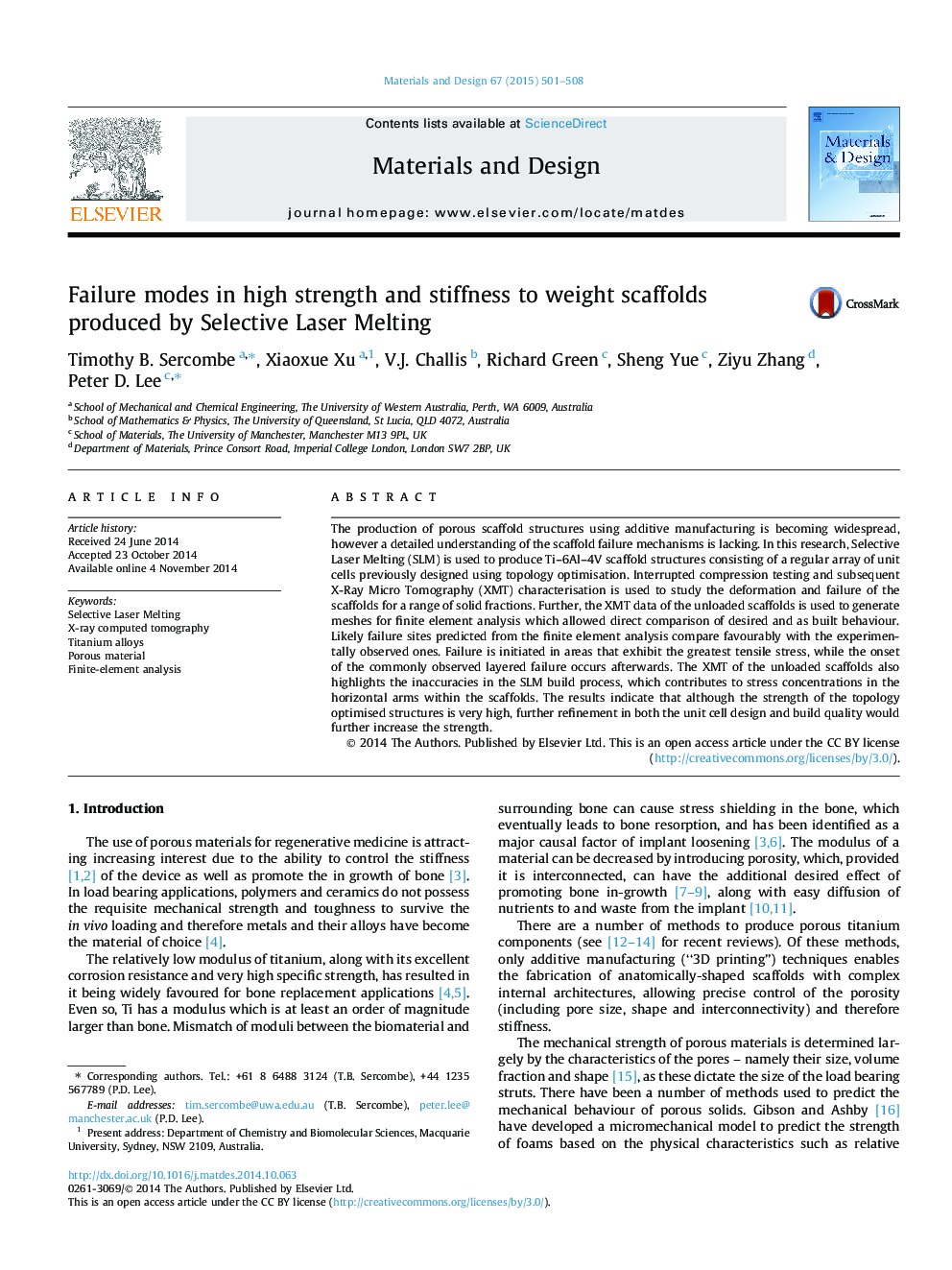| Article ID | Journal | Published Year | Pages | File Type |
|---|---|---|---|---|
| 7220788 | Materials & Design (1980-2015) | 2015 | 8 Pages |
Abstract
The production of porous scaffold structures using additive manufacturing is becoming widespread, however a detailed understanding of the scaffold failure mechanisms is lacking. In this research, Selective Laser Melting (SLM) is used to produce Ti-6Al-4V scaffold structures consisting of a regular array of unit cells previously designed using topology optimisation. Interrupted compression testing and subsequent X-Ray Micro Tomography (XMT) characterisation is used to study the deformation and failure of the scaffolds for a range of solid fractions. Further, the XMT data of the unloaded scaffolds is used to generate meshes for finite element analysis which allowed direct comparison of desired and as built behaviour. Likely failure sites predicted from the finite element analysis compare favourably with the experimentally observed ones. Failure is initiated in areas that exhibit the greatest tensile stress, while the onset of the commonly observed layered failure occurs afterwards. The XMT of the unloaded scaffolds also highlights the inaccuracies in the SLM build process, which contributes to stress concentrations in the horizontal arms within the scaffolds. The results indicate that although the strength of the topology optimised structures is very high, further refinement in both the unit cell design and build quality would further increase the strength.
Keywords
Related Topics
Physical Sciences and Engineering
Engineering
Engineering (General)
Authors
Timothy B. Sercombe, Xiaoxue Xu, V.J. Challis, Richard Green, Sheng Yue, Ziyu Zhang, Peter D. Lee,
